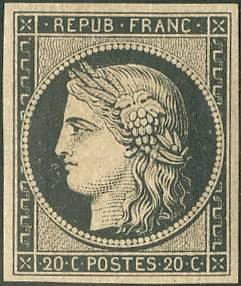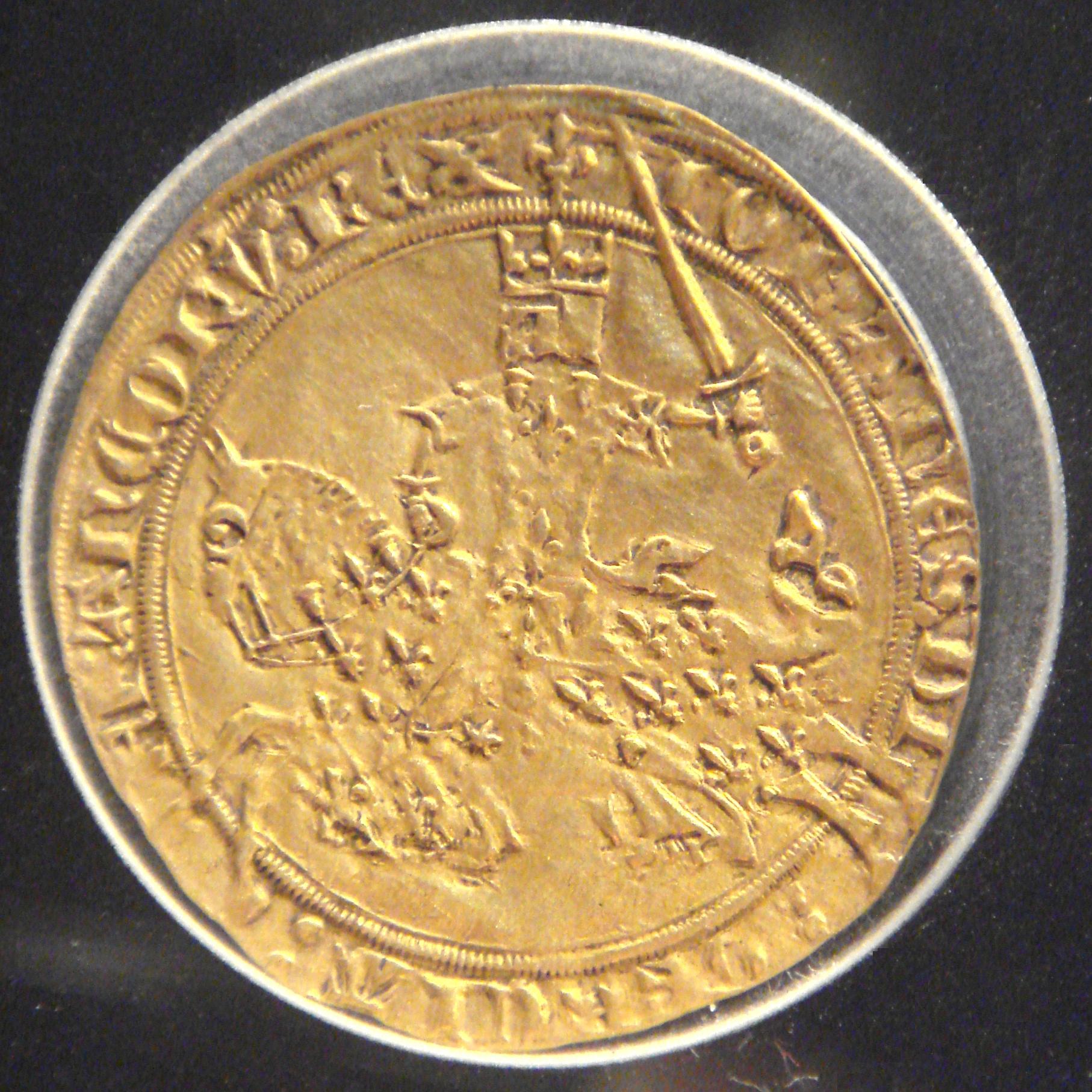|
Evolution Of Stamp Prices In France
The evolution of the rate for sending a letter to France at the first weight level can be studied from 1848 to the present day. History From 1848 to 1945 In 1848, the French Post Office launched the printing of a 20 centime stamp in black and a 1 franc stamp in red. Between 1849 and 1920, the Post Office's rate for the first weight step was relatively stable between 10 and 40 centimes de franc for 15 grams. In the interwar period, postal prices rose steadily from 25 centimes in 1920 to 1 franc in 1939. From 1945 to 1975 After the World War II, Second World War, the price of a letter weighing less than 20 grams rose from 3 francs in 1946 to 25 francs in 1959. With the new franc, the domestic rate rose from 25 centimes in 1960 to 40 centimes in 1969. From 1975 to 2015 For some forty years, the price of a stamp for a letter weighing less than 20 grams remained stable, equivalent to 60 and 70 euro cents in 2022. During the 1970s, the domestic rate for a 20-gram letter ro ... [...More Info...] [...Related Items...] OR: [Wikipedia] [Google] [Baidu] |
Ceres 20c Noir 01
Ceres most commonly refers to: * Ceres (dwarf planet), the largest asteroid and first to be discovered * Ceres (mythology), the Roman goddess of agriculture Ceres may also refer to: Places Brazil * Ceres, Goiás, Brazil * Ceres Microregion, in north-central Goiás state, Brazil United States * Ceres, California * Ceres, Georgia * Ceres, Iowa * Ceres, New York, a community that also extends into Pennsylvania * Ceres, Oklahoma, a community in Noble County * Ceres, Virginia * Ceres, West Virginia * Ceres Township, McKean County, Pennsylvania Other countries * Ceres, Santa Fe, Argentina * Ceres, Victoria, Australia * Ceres, Piedmont, Italy * Ceres, Fife, Scotland * Ceres, South Africa, in Western Cape * Ga-Ngwetsana, also known as Ceres, Limpopo, South Africa * Ceres Nunataks, Antarctica * Ceres Koekedouw Dam, dam on the Koekedouw River, near Ceres, Western Cape, South Africa Acronyms * California Environmental Resources Evaluation System * Centre for Research on Energy Sec ... [...More Info...] [...Related Items...] OR: [Wikipedia] [Google] [Baidu] |
Franc
The franc is any of various units of currency. One franc is typically divided into 100 centimes. The name is said to derive from the Latin inscription ''francorum rex'' (King of the Franks) used on early French coins and until the 18th century, or from the French ''franc'', meaning "frank" (and "free" in certain contexts, such as ''coup franc'', "free kick"). The countries that use francs today include Switzerland, Liechtenstein, and most of Francophone Africa. The Swiss franc is a major world currency today due to the prominence of Swiss financial institutions. Before the introduction of the euro in 1999, francs were also used in France, Belgium and Luxembourg, while Andorra and Monaco accepted the French franc as legal tender ( Monégasque franc). The franc was also used in French colonies including Algeria and Cambodia. The franc is sometimes Italianised or Hispanicised as the ''franco'', for instance in Luccan franco. Origins The franc was originally a French gold coi ... [...More Info...] [...Related Items...] OR: [Wikipedia] [Google] [Baidu] |
Centime
Centime (from ) is French language, French for "Cent (currency), cent", and is used in English as the name of the fraction currency in several Francophone countries (including Switzerland, Algeria, Belgium, Morocco and France). In France, the usage of ''centime'' goes back to the introduction of the decimal currency, decimal monetary system under Napoleon. This system aimed at replacing non-decimal fractions of older coins. A five-centime coin was known as a ''sou'', i.e. a Solidus (coin), solidus or shilling. In Francophone Canada of a Canadian dollar is officially known as a ''cent'' (pronounced /sɛnt/) in both English and French. However, in practice, the form of ''cenne'' (pronounced /sɛn/) has completely replaced the official ''cent''. Spoken and written use of the official form ''cent'' in Francophone Canada is exceptionally uncommon. In the Canadian French vernacular ''sou'', ''sou noir'' ( means "black" in French), ''cenne'', and ''cenne noire'' are all widely known ... [...More Info...] [...Related Items...] OR: [Wikipedia] [Google] [Baidu] |
Interwar Period
In the history of the 20th century, the interwar period, also known as the interbellum (), lasted from 11 November 1918 to 1 September 1939 (20 years, 9 months, 21 days) – from the end of World War I (WWI) to the beginning of World War II (WWII). It was relatively short, yet featured many social, political, military, and economic changes throughout the world. Petroleum-based energy production and associated mechanisation led to the prosperous Roaring Twenties, a time of social mobility, social and economic mobility for the middle class. Automobiles, electric lighting, radio, and more became common among populations in the developed world, first world. The era's indulgences were followed by the Great Depression, an unprecedented worldwide economic downturn that severely damaged many of the world's largest economies. Politically, the era coincided with the rise of communism, starting in Russia with the October Revolution and Russian Civil War, at the end of WWI, and ended with ... [...More Info...] [...Related Items...] OR: [Wikipedia] [Google] [Baidu] |
World War II
World War II or the Second World War (1 September 1939 – 2 September 1945) was a World war, global conflict between two coalitions: the Allies of World War II, Allies and the Axis powers. World War II by country, Nearly all of the world's countries participated, with many nations mobilising all resources in pursuit of total war. Tanks in World War II, Tanks and Air warfare of World War II, aircraft played major roles, enabling the strategic bombing of cities and delivery of the Atomic bombings of Hiroshima and Nagasaki, first and only nuclear weapons ever used in war. World War II is the List of wars by death toll, deadliest conflict in history, causing World War II casualties, the death of 70 to 85 million people, more than half of whom were civilians. Millions died in genocides, including the Holocaust, and by massacres, starvation, and disease. After the Allied victory, Allied-occupied Germany, Germany, Allied-occupied Austria, Austria, Occupation of Japan, Japan, a ... [...More Info...] [...Related Items...] OR: [Wikipedia] [Google] [Baidu] |
New Franc
The franc (; , ; currency sign, sign: F or Fr), also commonly distinguished as the (FF), was a currency of France. Between 1360 and 1641, it was the name of coins worth 1 livre tournois and it remained in common parlance as a term for this amount of money. It was reintroduced (in French livre, decimal form) in 1795. After two centuries of inflation, it was Redenomination, redenominated in 1960, with each (NF) being worth 100 old francs. The NF designation was continued for a few years before the currency returned to being simply the franc. Many French residents, though, continued to quote prices of especially expensive items in terms of the old franc (equivalent to the new centime), up to and even after the introduction of the euro (for coins and banknotes) in 2002. The French franc was a commonly held international reserve currency of reference in the 19th and 20th centuries. Between 1998 and 2002, the conversion of francs to euros was carried out at a rate of 6.55957 franc ... [...More Info...] [...Related Items...] OR: [Wikipedia] [Google] [Baidu] |




